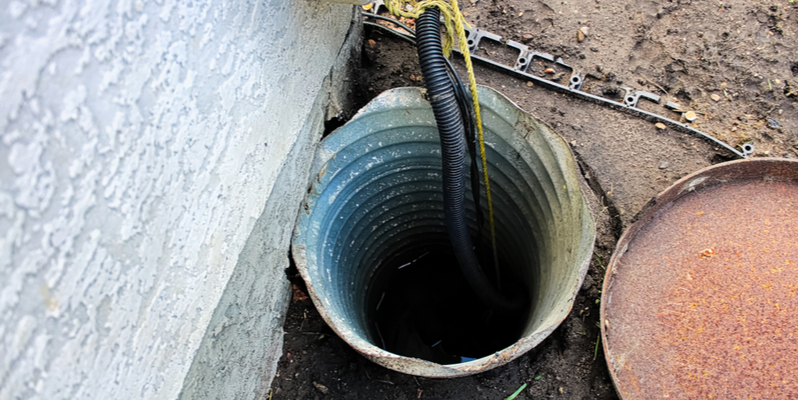Confirmed Methods for Servicing a Sump Pump
Confirmed Methods for Servicing a Sump Pump
Blog Article
Were you hunting for guidance around Keep Your Sump Pump Clean, It'll Keep You Dry?

Sump pumps are critical components in many homes, particularly in areas vulnerable to flooding or too much moisture. They aid stop water damage by successfully eliminating excess water from basements or crawl spaces. Nonetheless, like any other home appliance, sump pumps require routine maintenance to guarantee they function properly when required one of the most. Cleansing your sump pump is a crucial part of its upkeep, and comprehending exactly how to do it properly can save you from costly repair work and possible catastrophes.
Introduction
Preserving a tidy sump pump is vital for its appropriate performance and longevity. Disregarding this vital job can cause blockages, malfunctions, and eventually, water damage to your residential property. Consequently, finding out just how to clean up a sump pump is vital for homeowners that depend on these tools to maintain their basements dry and protected.
Indicators of a Dirty Sump Pump
Understanding when your sump pump requires cleaning is critical for preventing prospective breakdowns. Some typical signs that suggest a filthy sump pump consist of strange sounds during operation, minimized water flow, and visible debris in the pit. If you see any of these symptoms, it's essential to clean your sump pump without delay to stay clear of any type of more issues.
Getting ready for Cleaning
Before you begin cleansing your sump pump, it's necessary to take some safety precautions. Start by shutting down the power to the pump to avoid any type of electric accidents. Additionally, put on suitable safety gear, such as gloves and goggles, to protect yourself from dirt, particles, and potential microorganisms.
Understanding the Sump Pump
Before diving into the cleaning process, it's important to have a fundamental understanding of how a sump pump functions. Generally mounted in a pit or container listed below the cellar flooring, a sump pump contains numerous key parts, including a pump, a float switch, and a discharge pipeline. When water builds up in the pit, the float switch activates the pump, which then pumps the water out with the discharge pipeline, away from the building's structure.
Step-by-step Guide to Cleaning a Sump Pump
Turning off the Power
Begin by disconnecting the power supply to the sump pump to prevent any type of crashes while cleansing.
Looking For Proper Functioning
Before reinstalling the pump, do a fast test to guarantee that the float button activates the pump properly. Pour some water right into the sump pit and observe the pump's procedure. If everything is functioning appropriately, you can rebuild the pump and reconnect the power supply.
Eliminating Debris and Dust
Make use of a container or a scoop to get rid of any kind of visible debris, dust, or sediment from the sump pit. Dispose of the debris effectively to prevent it from clogging the pump or the discharge pipeline.
Cleansing the Pump and Drift Switch Over
Once the pit is clear of debris, thoroughly get rid of the pump from the pit. Examine the pump and the float button for any kind of signs of damage or wear. Use a soft brush or fabric to clean up the surface areas and eliminate any type of collected grime.
Flushing the System
After cleaning up the pump and float button, purge the sump pit with clean water to eliminate any type of continuing to be dirt or sediment. This will aid guarantee that the pump operates efficiently and effectively.
Maintenance Tips to Maintain Your Sump Pump Clean
Along with regular cleansing, there are a number of maintenance pointers you can follow to maintain your sump pump in optimal problem:
Final thought
Cleaning your sump pump is a vital facet of its maintenance and makes certain that it runs efficiently when you need it one of the most. By adhering to the actions outlined in this overview and including normal maintenance right into your regimen, you can expand the life expectancy of your sump pump and shield your home from water damage.
6 STEPS ON HOW TO CLEAN A SUMP PUMP PROPERLY
UNDERSTANDING SUMP PUMPS
Your sump pump plays a crucial role in protecting your home by managing and removing excess water. It primarily functions as a “shield”, guarding your basement against the damaging effects of water accumulation. The pump is housed in a sump pit in the lowest part of your basement, and its job is to pump out any water that collects there.
During heavy rainfalls or when snow melts rapidly, water can infiltrate your basement, posing potential risks like flooding, structural damage, and harmful mold growth. Here, the sump pump springs into action, pumping out the intruding water and directing it away from your home.
SAFETY FIRST
Before cleaning, remember to prioritize safety. Disconnect the sump pump from the power source to prevent any accidental electric shocks. Also, wear sturdy gloves to protect your hands from any sharp or dirty components within the pump.
REMOVE THE SUMP PUMP
After ensuring your safety, the next step is to remove the sump pump from its pit. Doing this might require careful maneuvering as you don’t want to damage any pump components. Once removed, clean the sump pit to remove any accumulated debris or sludge.
INSPECT THE PUMP
Inspect the pump for any visible signs of wear or damage. Check the power cord, float switch, and impeller housing. If any components look worn out or damaged, consider replacing them to ensure optimal performance.
CLEAN THE PUMP
Thoroughly clean the pump with warm, soapy water. Make sure to rid it of any dirt, gravel, or other debris that might impede its performance. You can use a toothbrush to clean the small, hard-to-reach parts of the pump.
REINSTALL THE SUMP PUMP
Reinstall the pump into the sump pit Make sure it’s positioned correctly to remove the water effectively Once it’s back in place, reconnect it to the power source TEST THE PUMP
Finally, pour some water into the pit to ensure the pump works correctly. It should start automatically and begin pumping out the water; if it doesn’t, check the power source and the positioning of the pump.
Remember, while cleaning your sump pump is an essential part of home maintenance, hiring a professional plumber for a thorough inspection and cleaning at least once a year is also important. This will ensure that your pump is in optimal condition, ready to protect your home from potential water damage.
BEST PRACTICES FOR CLEANING SUMP PUMP DISCHARGE PIPES
Regular Inspection: Regularly inspect your discharge pipes, especially during heavy rainfall or snowmelt periods. Look for any signs of blockage or damage. Early detection of problems can prevent serious issues down the line. Periodic Cleaning: Over time, sediment and debris can accumulate in the discharge pipes, impeding the flow of water. Regular cleaning helps keep the pipes clear and functioning efficiently. You can use a high-pressure water jet to effectively clean the pipes. Insulation During Winter: In colder climates, discharge pipes can freeze, blocking the outflow of water. Protect your discharge pipes from freezing temperatures by insulating them with foam pipe insulation. This will ensure the sump pump can continue to discharge water even in freezing conditions. Proper Positioning: The discharge pipe should be positioned to direct water away from your home’s foundation. Improper positioning can lead to water seeping back into the basement. Ensure the pipe is long enough and angled correctly. Installation of a Check Valve: A check valve prevents water from flowing back into your sump pit after the pump has pushed it out. Installing a check valve helps maintain the efficiency of your sump pump and reduces the risk of flooding. Minimize Pipe Turns: Every curve or turn in the discharge pipe can decrease the efficiency of water flow. By minimizing turns and bends in your discharge pipe, you can increase the efficiency of your sump pump. https://www.fullspeedplumbing.com/how-to-clean-a-sump-pump-properly9999/

I ran across that post about How to Care for Your Sump Pump while doing a search on the search engines. Loved our blog entry? Please quickly share it. Help others locate it. We treasure reading our article about How to Care for Your Sump Pump.
Request Estimate Report this page